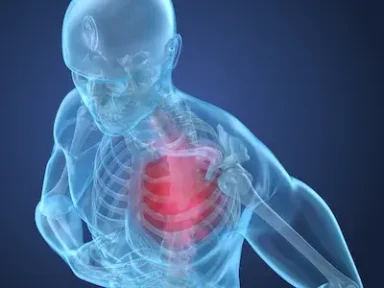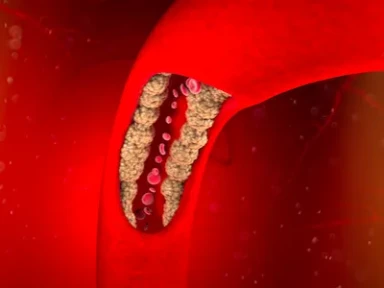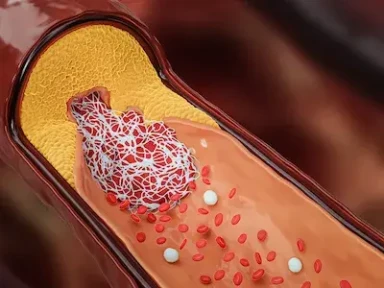Clinical practice experience in patients with familial hypercholesterolemia (FH) from the SAFEHEART registry
Proprotein convertase subtilisin/kexin type 9 inhibitors for heterozygous familial hypercholesterolemia: A clinical practice experience from the SAFEHEART registry

Key Takeaway
In clinical practice, PCSK9i (alirocumab or evolocumab) on top of maximum LLT significantly reduced LDL-C levels (by 58%) and improved LDL-C target achievement in patients with heterozygous FH (both in men and women).
LDL-C goals*:
- 2016 ESC/EAS goals†: Patients with ASCVD = 67%; patients without ASCVD = 80%
- 2019 ESC/EAS LDL-C goals‡: VHR patients = 46%; HR patients = 50%
Independent predictors for LDL-C goals: Male gender; smoking; and use of statins + ezetimibe
Why This Matters
- § Use of PCSK9i in clinical practice is less frequent (partly due to cost and insurance issues).
- SAFEHEART registry study assessed the use and efficacy of PCSK9i as well as LDL-C goals attainment in clinical practice setting of FH patients.
Study Design
SAFEHEART: Open, Multicenter, Nationwide, Long-term Prospective Study (N = 433 [Alirocumab = 211; Evolocumab = 222])
Key Inclusion Criteria
Patients with molecular diagnosis of FH (aged ≥20 years) on stable LLT, who received PCSK9i (alirocumab 75/150 mg every 2 or 4 weeks, or evolocumab 140 mg every 2 weeks or 420 mg every 4 weeks) from 2016 to January 2020¶
Key Exclusion Criteria
Patients who participated in RCTs with PCSK9i before 2016
LDL-C Goals: Defined and analyzed based on 2016 and 2019 ESC/EAS guidelines
Key Results
Overall, 433 patients were included in the analysis
Mean age = 55 years; male = 53%; history of ASCVD = 39%; median follow-up = 2.5 years
LDL-C Levels:
Before PCSK9i:
Median LDL-C = 145 mg/dL (IQR: 125–173)
After addition of PCSK9i:
LDL-C levels reduced by 58% (IQR: 41–70 [P <0.001]) in men and women without differences between both PCSK9i
Median LDL-C = 62 mg/dL (IQR: 44–87)
LDL-C Goals*
2016 ESC/EAS goals†: Patients with ASCVD = 67%; patients without ASCVD = 80%
2019 ESC/EAS LDL-C goals‡: VHR patients = 46%; HR patients = 50%
Higher LDL-C levels before PCSK9i initiation had a significant inverse relationship with goals attainment
Independent Predictors (2019 ESC/EAS LDL-C Goals)
Male gender (P = 0.023); smoking (P = 0.041); and use of statins + ezetimibe (P = 0.008)
Limitations
- Study lacked blinding randomization
- Follow-up analysis was not centralize
- In the follow-up analysis, Lp(a) measurement was not available
* Without differences between alirocumab or evolocumab.
† LDL-C target below 70 mg/dL and 100 mg/dL, respectively according to 2016 ESC/EAS guidelines.
‡ LDL-C goal according to 2019 ESC/EAS guidelines (for VHR patients <55 mg/dL; for HR patients <70 mg/dL).
§ International guidelines recommend PCSK9i for patients with FH with substantially higher LDL-C levels despite maximally tolerated statin ± ezetimibe.
¶ Kept a stable dose of PCSK9i at least 3 months before the last analysis. PCSK9i eligibility was based on Spanish National Health System reimbursement regulations in FH patients.
ASCVD, atherosclerotic cardiovascular disease; CV, cardiovascular; CVD, CV disease; EAS, European Atherosclerosis Society; ESC, European Society of Cardiology; FH, familial hypercholesterolemia; HR, high risk; IQR, interquartile range; LDL-C, low-density lipoprotein cholesterol; LLT, lipid-lowering therapy; Lp(a), lipoprotein(a); PCSK9i, proprotein convertase subtilisin/kexin type 9 inhibitors; RCTs, randomized clinical trials; SAFEHEART, Spanish Familial Hypercholesterolemia Cohort Study; SAFE-RE, SAFE- HEART risk equation; VHR, very high risk.
- Alonso R, Muñiz-Grijalvo O, Díaz-Díaz JL, Zambón D, de Andrés R, Arroyo-Olivares R et al. Efficacy of PCSK9 inhibitors in the treatment of heterozygous familial hypercholesterolemia: A clinical practice experience. J Clin Lipidol. 2021. Epub ahead of print. PMID: 34052174.



